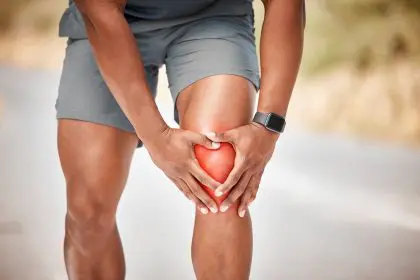Medical professionals have uncovered fascinating connections between simple stretching routines and significant pain relief. Their research reveals how these basic movements might transform daily comfort levels for millions of Americans dealing with persistent aches and stiffness.
Breaking down the science of flexibility
Medical researchers have discovered that regular stretching does more than just loosen tight muscles. These movements actually trigger biological responses throughout the body, releasing tension while promoting circulation and cellular repair. This understanding has revolutionized how healthcare providers approach pain management.
Beyond the morning stretch
While many associate stretching with early morning routines or post-workout cool-downs, medical professionals now recognize its broader impact on daily wellness. Office workers spending long hours at desks find particular benefits in specific stretching sequences that counteract the effects of prolonged sitting.
The desk warrior’s dilemma
Sarah Chen, a physical therapist specializing in workplace ergonomics, notes how modern work habits create unique challenges. “We’re seeing increasing numbers of people with neck and shoulder tension from computer work. Strategic stretching throughout the day can help prevent these issues from becoming chronic conditions.”
Understanding movement patterns
Different occupations create distinct patterns of muscle tension. Restaurant workers, retail employees, and others who stand all day develop different needs than office workers. Medical professionals now recommend tailored stretching approaches based on daily activity patterns.
The flexibility-stress connection
Research reveals surprising links between physical flexibility and stress management. Dr. Michael Rodriguez, a sports medicine specialist, explains that muscle tension often reflects mental stress. “When we help patients develop effective stretching routines, we often see improvements in both physical discomfort and stress levels.”
Starting from zero
Many avoid stretching, believing they’re “not flexible enough” to begin. However, medical professionals emphasize that everyone starts somewhere. The key lies in consistent, gentle progression rather than forcing immediate results.
The morning routine revolution
Morning stretches can set the tone for entire days. Physical therapists recommend starting with gentle movements that gradually wake up the body’s systems. This approach helps prevent injury while maximizing benefits.
Midday movement matters
Research shows that breaking up long periods of inactivity with strategic stretching can prevent pain before it starts. Even brief movement sessions can help maintain flexibility and reduce muscle tension throughout the day.
The evening unwinding
Evening stretching routines serve different purposes than morning movements. They help release accumulated daily tension and can promote better sleep quality. Medical professionals often recommend gentle stretching as part of healthy sleep hygiene practices.
Understanding different stretch types
Not all stretches serve the same purpose. Dynamic stretches, involving continuous movement, work well for morning routines. Static stretches, held for longer periods, prove more beneficial for evening relaxation.
The breathing connection
Proper breathing enhances stretching benefits. Medical professionals emphasize coordinating breath with movement to maximize flexibility gains and stress reduction benefits.
Age and adaptation
Different life stages require different approaches to stretching. While younger individuals might focus on athletic performance, older adults often prioritize maintaining mobility and preventing stiffness.
The flexibility journey
Progress in flexibility occurs gradually. Medical professionals recommend tracking improvements through how movements feel rather than trying to achieve specific positions or measurements.
Working with limitations
Those with existing injuries or conditions benefit from modified approaches. Physical therapists can provide specific adaptations that maintain safety while promoting healing and mobility.
The role of consistency
Regular stretching produces better results than occasional intense sessions. Medical professionals recommend establishing sustainable routines that fit naturally into daily schedules.
Understanding pain signals
While mild discomfort during stretching might occur, sharp pain signals problems. Healthcare providers emphasize the importance of recognizing different types of pain signals during stretching routines.
The social aspect
Group stretching classes offer both physical benefits and social support. Many find motivation and accountability through shared wellness activities.
Environmental considerations
Creating appropriate spaces for stretching helps maintain consistent practice. Simple modifications to home or office environments can facilitate regular movement breaks.
Looking forward
As research continues, medical professionals anticipate learning more about how different types of stretching affect various health conditions. This ongoing discovery process promises to refine recommendations for specific situations.
The whole-body approach
Understanding how different body systems interact during stretching helps explain its wide-ranging benefits. From circulation to nervous system function, gentle movement influences multiple aspects of health.
The connection between regular stretching and improved wellbeing continues fascinating medical professionals. As research reveals more about how these simple movements influence health, healthcare providers increasingly recommend stretching as part of comprehensive wellness approaches.
For those seeking to enhance their daily comfort and mobility, starting with gentle, consistent stretching routines often leads to surprising improvements in overall wellbeing. While individual needs vary, the fundamental benefits of regular movement remain consistent across different ages and activity levels.















